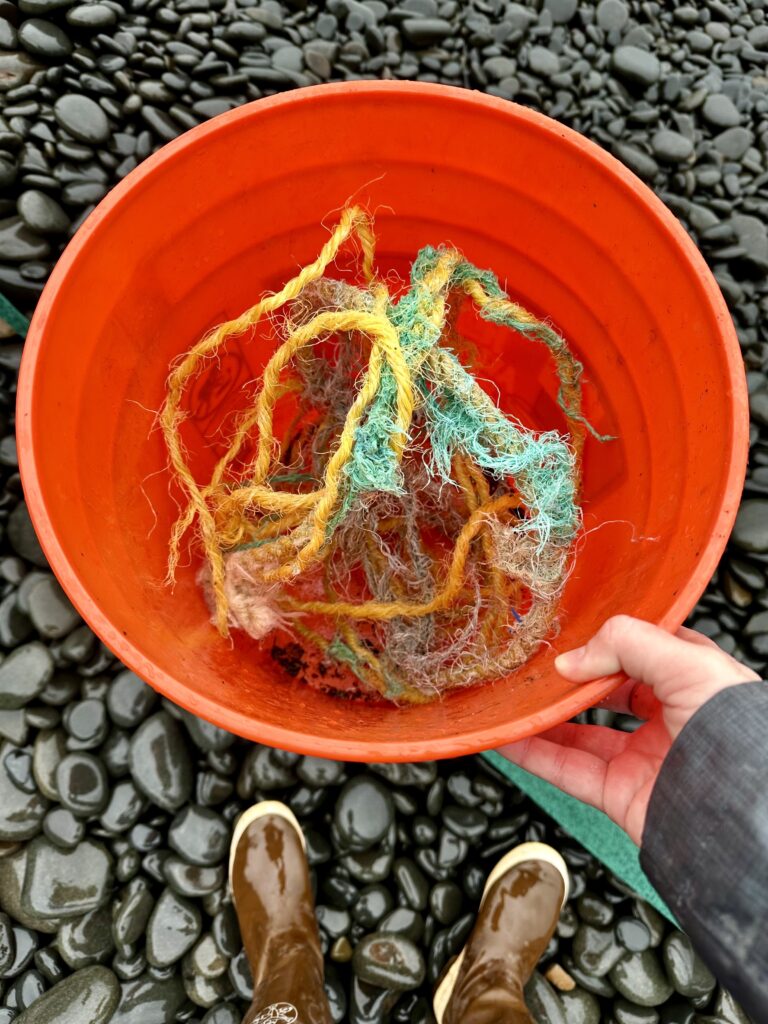NCLC has started a new community science program at Cape Falcon Marine Reserve this winter, and it will give volunteers another opportunity to participate in stewarding this special conserved site on the Oregon Coast.

The marine reserve program is conducting marine debris surveys at a site in Arch Cape that’s adjacent to the marine reserve. It is part of the Marine Debris Monitoring and Assessment Project (MDMAP), managed by the National Oceanic and Atmospheric Administration (NOAA).
According to NCLC Marine Program Coordinator Angela Whitlock, the project is used to globally track marine debris and get a sense for what is washing up, where, and what time of years. This can provide insight into the main drivers of marine debris in different areas of the world.
“It’s a really good way of getting a snapshot of what’s happening around the globe,” she says. “All of that data is used to understand what is washing up, how it affects the wildlife, and where we need to. The ultimate goal with the program is to keep our marine environment clean and our water healthy.”
Tracking the Drivers of Marine Debris
The site along Cape Falcon Marine Reserve was set up several years ago by CoastWatch, the volunteer program of Oregon Shores Conservation Coalition, but it hasn’t been monitored for MDMAP. Looking to start marine debris surveys at Cape Falcon, Angela determined they could integrate this site, which covers 100 square yards, and bring on community scientists as volunteers.
During the surveys, volunteers monitor four transects—or five-yard segments—from the back of the beach down to the waterline. These transects are generated randomly and, ideally, the site is monitored on a monthly basis.
According to Angela, the goal is to do monitoring monthly, although it can depend on weather and beach conditions. Volunteers take photos and document what’s being collected.
Marine debris is classified as anything that is human-made, Angela says, and they focus on items that are at least the size of the a bottle cap. That includes plastics, rubbers, synthetic lumber, coolers, plastic bags, lighters, cigarette butts, and the like.
“The more we know about what’s showing up, where and why, and where the source is, we can try to fix where it’s coming from,” Angela says. “It also helps to shape our public policies on debris.”
NCLC can use volunteer help for this community science project, along with the others that take place at Cape Falcon Marine Reserve. If you’re interested, contact Angela at angelaw@NCLCtrust.org.

Comments